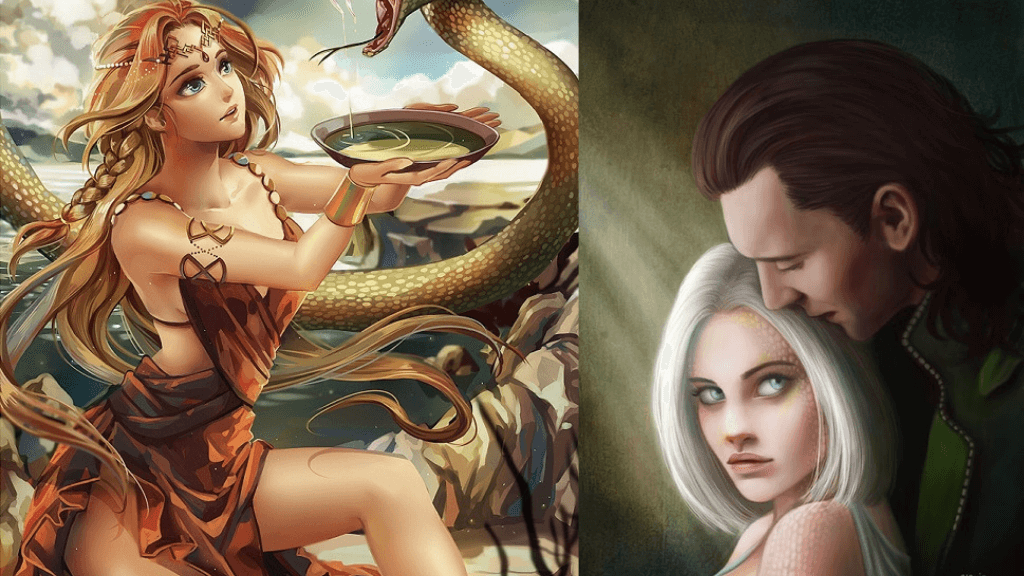Okay so today I got this itch to actually understand who Sigyn, Loki's wife, really was beyond the "sad wife holding a bowl" image. Felt like she deserved more than that one snapshot, y'know? Grabbed my notebook, brewed a massive coffee, and just started digging. Here's how it went down:
Getting Started & What I Wanted to Know
First thing was figuring out where to look. Everyone talks about Loki, right? Mischief, bound, Ragnarok... but Sigyn? She's usually just a footnote. My goal was simple: find out specific stories about her beyond the binding scene. What made her tick? What other myths actually feature her?
Cracked open my old copy of the Prose Edda by Snorri Sturluson. Used the index, obviously. Also hopped online, searching like "Sigyn mythology beyond the bowl" and "Norse myths Sigyn actually does something." Found a bunch of articles and forum discussions, but had to be careful separating actual old stories from modern interpretations. That’s key.

The Real Digging: What’s Actually Written?
Turns out, the sources are brutally sparse. Like, shockingly little. Focused on two main parts:
- Binding Loki: This is the big one everyone knows. When Loki's punished by the gods for Baldr's death, he gets bound with his son’s entrails (harsh!) under a dripping serpent’s venom. Sigyn’s action: She stands there holding a bowl over him, catching the poison. Simple verb. She holds the bowl. But man, think about it. That’s not passive. That’s constant, exhausting vigilance. That bowl fills up, she has to step away to empty it, Loki writhes in agony during those moments... and then she comes back and does it again. Forever? Almost? That’s brutal devotion. My hands were actually shaking reading that part properly. It’s not just sadness; it's sheer, stubborn persistence in the face of endless torture.
- Her Sons: Found mentions of her two kids, Nari and Narfi (or sometimes Váli). This is gut-wrenching. In the same stories where Loki's bound, Váli (one son) is turned into a wolf or kills his brother Nari/Narfi. The gods then use Nari/Narfi’s entrails to bind Loki. Sigyn’s connection: She witnessed this. As their mother. Losing both sons in such a horrific, grotesque way right before Loki's own eternal torment. Think about her standing there holding that bowl, knowing her kids were just... destroyed as part of the setup. Adds a whole other layer of horror to her vigil.
Wait, other stories? Kept digging. Searched kennings (those poetic descriptions Vikings used). References? She's sometimes called "incantation foe," maybe hinting at protective magic? But no concrete stories about it. Explored websites claiming she was a goddess of fidelity or compassion. Feels plausible... but where's the original myth? Couldn't find any surviving sources describing her doing anything like granting blessings or receiving worship. Everything circles back to that binding scene and the loss of her children. That's it. The silence about the rest of her life is kinda deafening.
What Hit Me / What I Learned
By the time I put the laptop down, I felt kinda drained. Her story isn't complicated; it's horrifically simple and focused. Here's the real takeaway:
- She’s defined by unwavering loyalty in an impossible nightmare. Not flashy, just relentless. Holding. That. Bowl.
- The cost was everything. Her sons gone, husband eternally tormented, her role reduced to a single, desperate action repeating forever.
- There’s no Sigyn myth beyond the binding. Seriously. She doesn't get her own adventures, origins, powers, or victories elsewhere. What we see in the binding is almost her entire known story. She's permanently framed within Loki's worst moment. Powerful? Yes. Tragic? Absolutely. But independent stories? Nope.
Finished my notes feeling heavy. We talk about Viking bravery, but Sigyn’s brand of courage is quiet, brutal, and ultimately trapped in a single, heartbreaking act of love. That’s why she sticks with you – not because of complex tales, but because of that pure, devastating focus on enduring the unendurable for someone she loves. Makes you wonder about all the other silent figures lost in those old tales.












